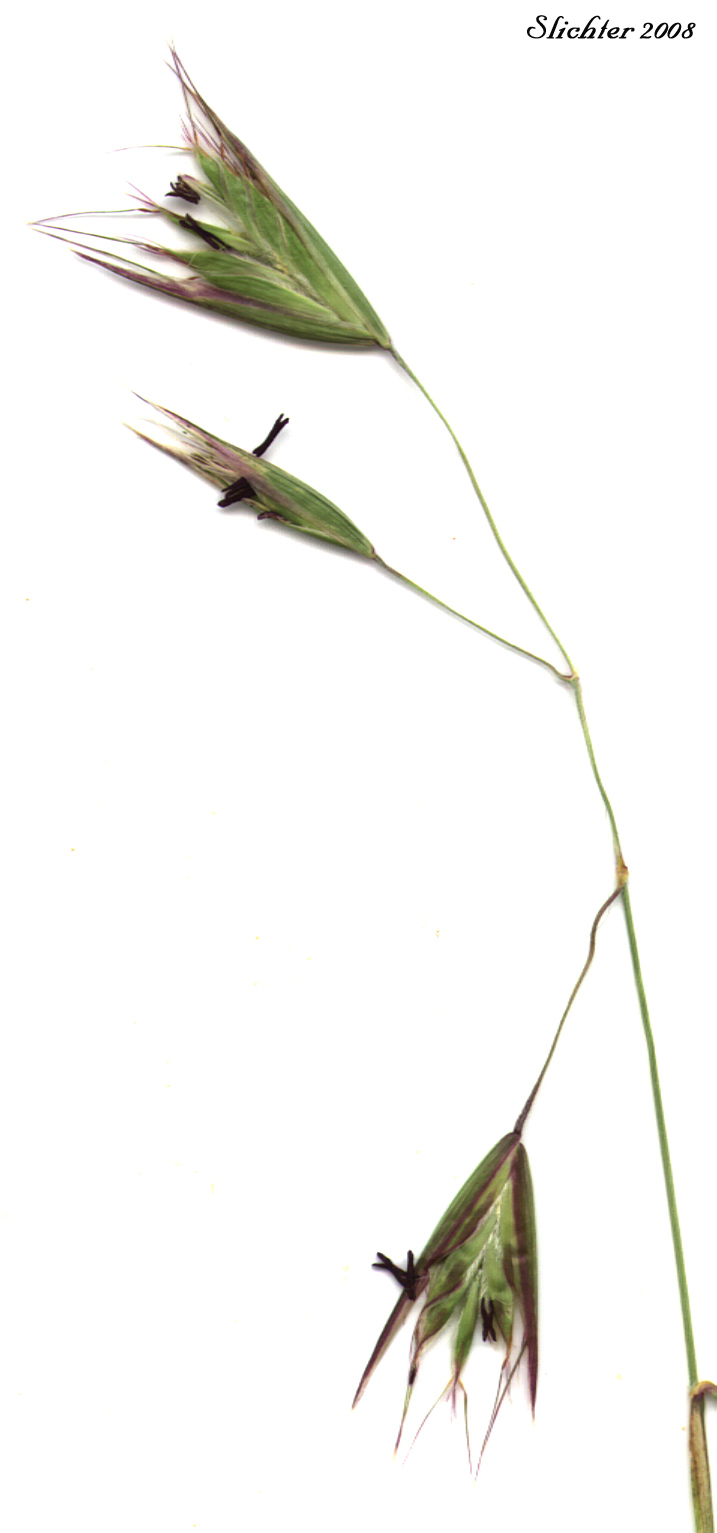Adaptation
Climate is very important in the growth of California oatgrass.
The Pacific Coast typically has cool summers and warmer winters than
most other areas of the United States. The warm temperatures allow
for germination to occur. There have been many benefits
experimentally shown to provide quicker germination rates among this
organism. Even though California oatgrass is a native plant, it can
still overpopulate in an area and cause dormancy in the seeds.
Some benefits include mild burning and grazing on several small
portions of seed plots (Hatch et al. 1999). Mowing can also be a
benefit. This was an experiment by Wilson and Clark in 2001 showing
how the varying heights of mowing can
affect the growth and flowering of California oatgrass (Wilson and Clark 2001).
The mowing height associated with a higher growth rate in California
oatgrass can be used in areas where this organism is not thriving.
On the other hand, the mowing height that causes lower growth rates
can be beneficial for areas where overpopulation is occurring.
There is a vast variety of wildlife on the Pacific coast, and these
wildlife and livestock take advantage of the large amounts of
California oatgrass (Darris and Gonzalves 2008). This organism
improves the habitat for these animals by providing a food source, a
cover for hiding, and nesting in certain areas. Revegetation and
restoring land is also a function of California oatgrass (Darris
and Gonzalves 2008, Hayes and Holl 2011). In the drawing shown
below (Figure 1) California oatgrass can grow as a very thick plant.
These grassy portions are what provide the hiding sites for other
organisms. Specific organisms include the
devastating grasshopper and the
Clark Sphinx Moth, along with the
Cyclosa conica spiders which create their webs within
this grass. A good example of how spiders utilize this organism is
shown on the Facts page.

Figure 1. A general drawing of Danthonia californica.
Illustrated by Kristin Jakob.
Below is a diagram (Figure 2) of the structures of California
oatgrass. It shows the many aspects and components of this organism
and what is involved in the process of its growth. The upper
portion is comprised of the seeds, which contain pollen grains that
get dispersed in the wind. The flowering of California oatgrass is
also within this upper portion. The middle portion consists of multiple branchings
and leafy sections that
provide more surface area to the plant. The root system also
provides this support. A higher surface area is very beneficial for
the nutrient acquisition of this native grass.

Figure 2. A diagram of the structures of Danthonia californica.
Photo taken by Paul Slichter. 2008.
How does this organism reproduce? Let's find out!